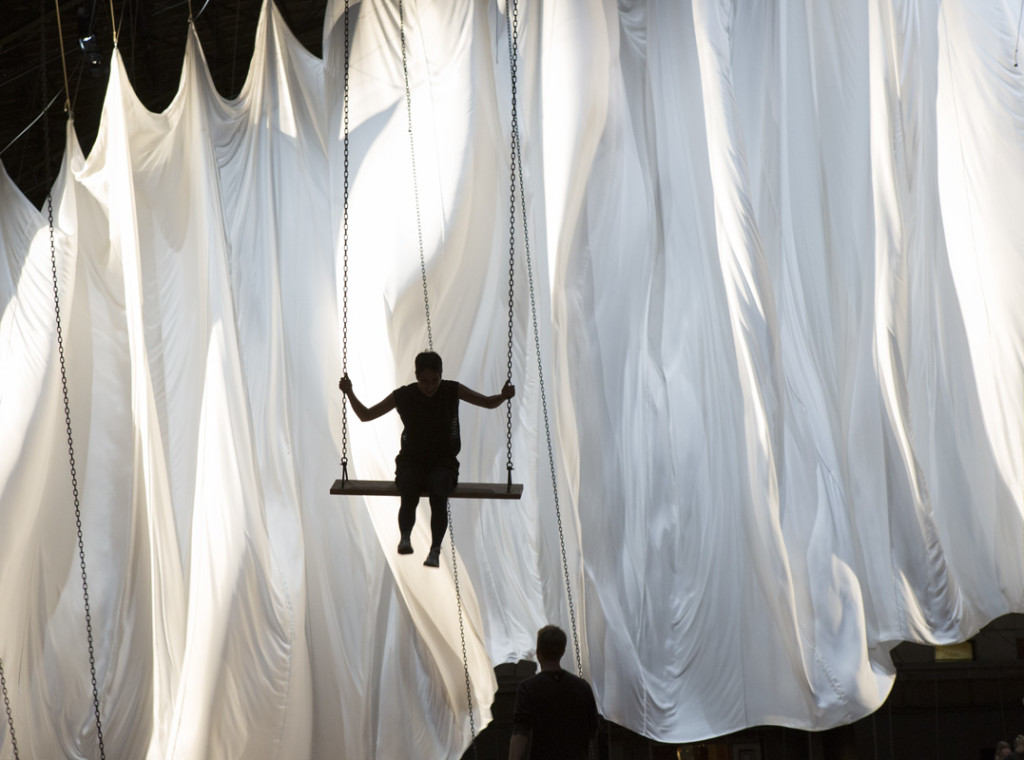
I sometimes get mail criticizing the number of art installations I feature, as not being ‘true’ playgrounds. But these temporary play spaces–by artists, designers, makers, and urban interventionists outside of the narrow field of play practitioners–are where the playgrounds of the future are being born. They, not academics and not formulaic manufacturers, are the ones testing new forms, experimenting with innovative ideas, and particularly addressing the neglected interface of play and aesthetics; all necessary to engage children and parents with play spaces amid the visual saturation of the twenty-first century.
Thousands stood in long lines to visit Anne Hamilton’s Event of a Thread swings in New York last year. Why aren’t playground swings that engaging? What can playground makers learn from the swing-as-art-installation (which, like the slide-in-office, is having a moment)?
1. Everybody loves a swing. Children, but adults, too, and playground designers should picture grown-ups as participants, not just ‘pushers’ in swinging. The ’21 balancoires’ of award-winning design group Daily tous les jours accommodate both large and small swingers. Your playground should too.
2. Free the swings from the playground. One of the key elements of the ‘Post-Playground Era’ (some of we playground people are considering hosting a conference on that, by the way…get in touch if you’re interested) is the distribution of smaller play elements throughout the cityscape in new places and unexpected ways. Coming upon a swing in a playground is no surprise. But at a bus station or in a market square or a parking space, like the temporary Swing Park in Dallas, it is sheer delight, and engages both children and adults in a whole new way (see also A Brief History of the Urban Swing). Swings are particularly interesting in spaces of urban neglect, as seen so beautifully in the work of Basurama.
3. Shake up the traditional visual of the swing. Put them in cherry red houses, like at Mi Casa Your Casa, by Mexican designers Héctor Esrawe and Ignacio Cadena at the High Museum of Art in Atlanta. Swinging lasts awhile, and the swinger’s eyes are free to look around. So give them something to look at already. Place a mural of clouds (ala Jillian Mayer’s Cloud Swing) or a mirror nearby, inspired by the ‘Swing to Infinity’ of Thilo Frank. Most kids would indeed swing for.ever. if they could watch themselves in a mirror while they did so.
4 and 5 tomorrow…stay tuned!
The post What Playgrounds can Learn from Swings as Art Installations, Part 1 appeared first on Playscapes.




















